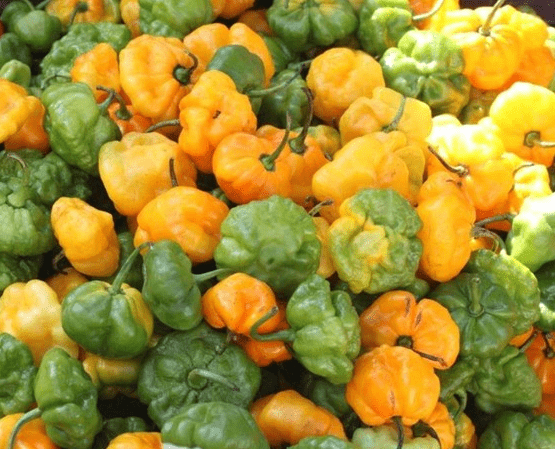The Scotch Bonnet Pepper is a vibrant and fiery chili pepper that holds a special place in Caribbean cuisine. Renowned for its distinctive shape and intense heat, this pepper is a cornerstone ingredient in many traditional dishes from Jamaica, Trinidad and Tobago, Haiti, and other nearby islands. Its bold flavor profile and fiery kick have made it a favorite among spice enthusiasts worldwide, and it continues to gain recognition in culinary circles beyond the Caribbean. For more detailed information about this remarkable pepper, you can visit Scotch Bonnet Pepper.
Origins and Characteristics
The Scotch Bonnet Pepper is believed to have originated in the Caribbean region, where it has been cultivated for centuries. Its name is derived from its characteristic shape, which resembles a Scotch bonnet or a traditional Scottish hat. The pepper typically measures about 1.5 to 2.5 inches long and 1 to 2 inches wide, with a wrinkled, lobed appearance. Its vibrant color varies from bright red to orange and sometimes yellow, depending on its ripeness. The skin of the Scotch Bonnet is glossy and firm, and its shape and size make it easily distinguishable from other chili peppers.
The heat of the Scotch Bonnet Pepper is primarily due to its high concentration of capsaicin, the compound responsible for the spicy sensation. On the Scoville scale, which measures the pungency of chili peppers, Scotch Bonnets usually range from 100,000 to 350,000 SHU (Scoville Heat Units), placing them among the hotter varieties of peppers. Despite their fiery nature, Scotch Bonnets are prized not only for their heat but also for their unique flavor, which combines fruity, smoky, and spicy notes.
Culinary Uses and Popular Dishes
The Scotch Bonnet Pepper is an essential ingredient in many Caribbean dishes, adding depth and heat to stews, sauces, marinades, and condiments. One of the most famous uses is in jerk seasoning, a traditional Jamaican marinade that incorporates Scotch Bonnets along with allspice, thyme, garlic, and other spices. When used in jerk chicken or pork, the Scotch Bonnet imparts a distinctive fiery flavor that has become iconic worldwide.
In addition to jerk, Scotch Bonnets are used to make hot sauces and pepper jams. These condiments are often served alongside grilled meats, seafood, or even vegetables, enhancing the dish’s flavor profile. The peppers can also be chopped and added directly to soups, stews, and rice dishes to provide a spicy kick. Because of their potent heat, it is recommended to handle Scotch Bonnets with care, using gloves to avoid skin irritation and eyes when cutting or preparing them.
Health Benefits and Considerations
Beyond their culinary appeal, Scotch Bonnet Peppers also offer potential health benefits. Capsaicin, the active component, is known for its antioxidant properties and its ability to promote metabolism and alleviate pain. Consuming spicy peppers like Scotch Bonnets may help stimulate circulation, boost immune response, and even support weight loss efforts due to increased fat burning.
However, due to their high heat level, they are not suitable for everyone, especially individuals with gastrointestinal sensitivities or conditions such as acid reflux. It is advisable to start with small quantities when experimenting with recipes and to be cautious if you have a sensitive digestive system. Always wash your hands thoroughly after handling Scotch Bonnets to prevent accidental irritation.
Growing and Harvesting
Growing Scotch Bonnet Pepper requires a warm, tropical climate, making it well-suited for outdoor cultivation in regions with consistent sunlight and well-drained soil. The plants thrive with regular watering and benefit from a fertilizer rich in nitrogen. Harvesting typically occurs when the peppers reach their mature color—red, orange, or yellow—indicating optimal flavor and heat. Properly dried and stored, Scotch Bonnets can retain their potency for months, making them a staple in Caribbean kitchens and beyond.
Conclusion
The Scotch Bonnet Pepper is much more than a fiery ingredient; it is a symbol of Caribbean culinary identity. Its unique shape, vibrant color, and explosive flavor make it a sought-after spice for those looking to add heat and authenticity to their dishes. Whether used in traditional recipes like jerk chicken, or as a fiery addition to sauces and marinades, Scotch Bonnet Pepper offers a spicy experience that speaks to the rich cultural heritage of the Caribbean. For those interested in exploring more about this remarkable chili, visiting Scotch Bonnet Pepper provides comprehensive insights into its uses, cultivation, and cultural significance.





